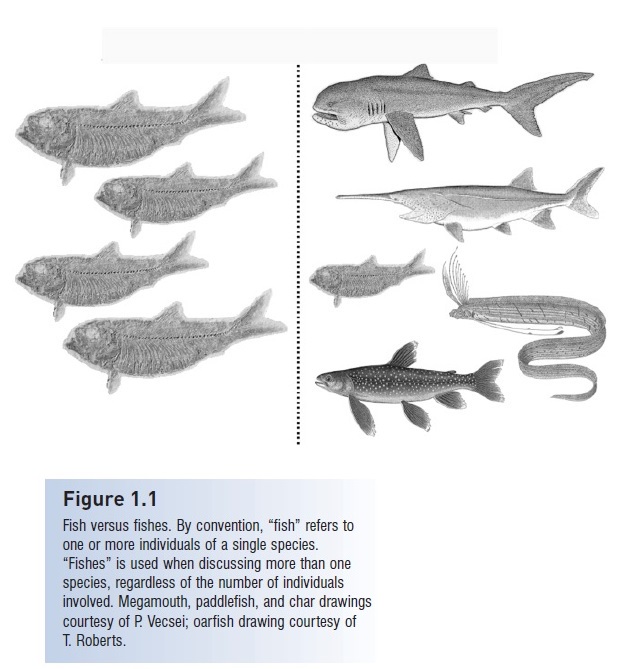Chapter: The Diversity of Fishes: Biology, Evolution, and Ecology: Introduction
The diversity of fishes
The diversity of fishes
Numerically, valid scientific descriptions exist for approximately27,977 living species of fishes in 515 families and62 orders (Nelson 2006; W. Eschmeyer pers. comm.; Table1.1) (note: “fish” is singular and plural for a single species, “fishes” is singular and plural for more than one species; see Fig. 1.1). Of these, 108 are jawless fishes (70 hagfishes and 38 lampreys); 970 are cartilaginous sharks (403), skates

When broken down by major habitats,41% of species live in fresh water, 58% in sea water, and 1% move between fresh water and the sea during their life cycles (Cohen 1970). Geographically, the highest diversities are found in the tropics. The Indo-West Pacific area that includes the western Pacific and Indian oceans and the Red Sea has the highest diversity for a marine area, whereas South America, Africa, and Southeast Asia, in that order, contain the most freshwater fishes (Berra2001; Leveque et al. 2008). Fishes occupy essentially all aquatic habitats that have liquid water throughout they ear, including thermal and alkaline springs, hypersaline lakes, sunless caves, anoxic swamps, temporary ponds, torrential rivers, wave-swept coasts, and high-altitude and high-latitude environments. The altitudinal record is set by some nemacheiline river loaches that inhabit Tibetan hot springs at elevations of 5200 m. The record for unheated waters is Lake Titicaca in northern South America, where pup fishes live at an altitude of 3812 m. The deepest living fishes are cusk-eels, which occur 8000 m down in the deep sea.

Variation in body length ranges more than 1000-fold.The world’s smallest fishes – and vertebrates – mature ataround 7–8 mm and include an Indonesian minnow, Paedocyprisprogenetica, and two gobioids, Trimmatom nanusfrom the Indian Ocean and Schindleria brevipinguis from Australia’s Great Barrier Reef (parasitic males of a deepseaangler fish Photocorynus spiniceps mature at 6.2 mm, although females are 10 times that length). The world’s longest cartilaginous fish is the 12 m long (or longer) Whale Shark Rhincodon typus, whereas the longest bony fish is the8 m long (or longer) Oarfish Regalecus glesne. Body masses top out at 34,000 kg for whale sharks and 2300 kg for the Ocean Sunfish Mola mola. Diversity in form includes relatively fish like shapes such as minnows, trouts, perches, basses, and tunas, but also such unexpected shapes as box like trunkfishes, elongate eels and catfishes, globoselump suckers and frogfishes, rectangular ocean sunfishes, question-mark-shaped seahorses, and fl attened and circular flat fishes and batfishes, ignoring the exceptionally bizarre fishes of the deep sea.
Related Topics